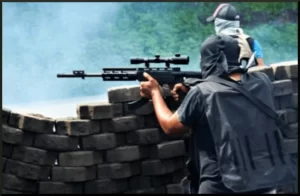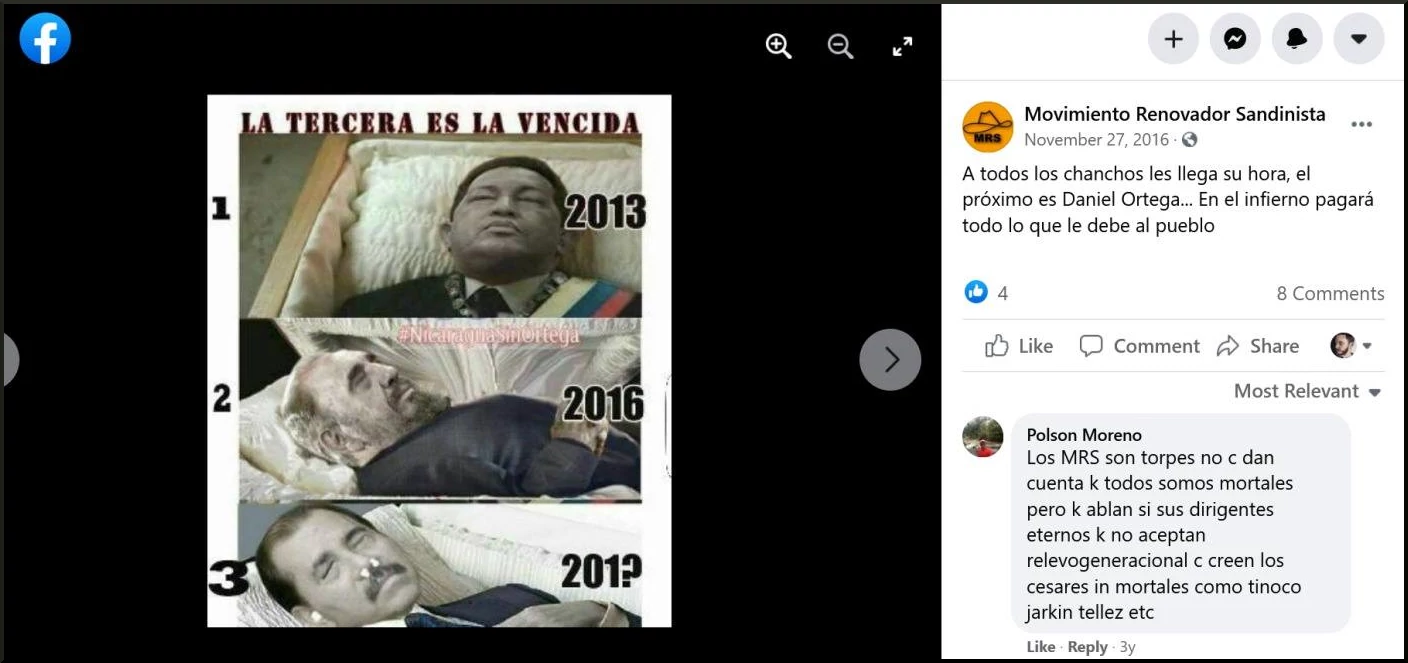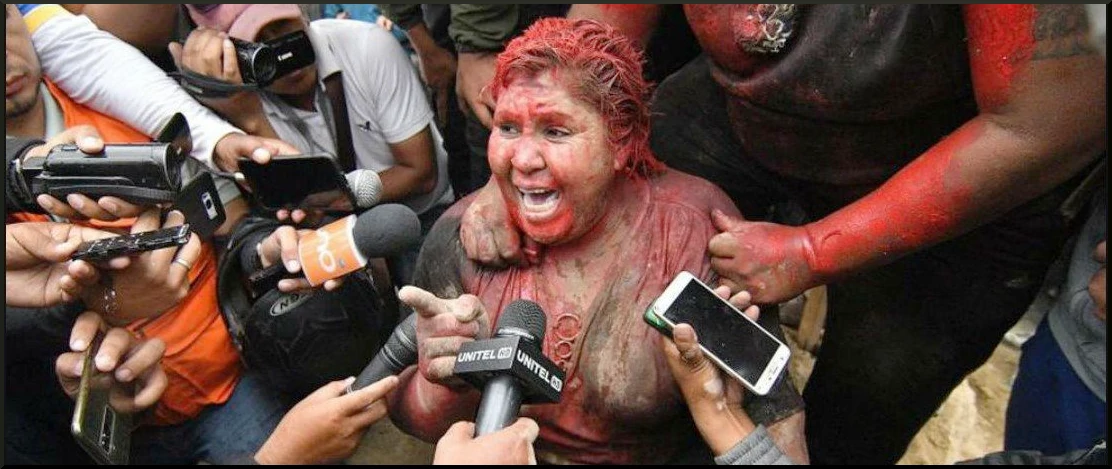by Jill Clark-Golub, published on Counterpunch, March 3, 2023
Hybrid warfare tactics, including information warfare and the co-opting of human rights groups, make it hard to tell the good guys from the bad in the US-backed coup attempt in Nicaragua in 2018. But it is important to note the telltale signs of class oppression and terrorist tactics to understand the truth about the 222 people recently released to the US who were convicted of treason in Nicaragua for savage acts of violence against their people. They had benefited from an amnesty in 2019, but violated its terms by participating in a new coup plot in 2020 and 2021. In releasing the 222 over to the US, the Nicaraguan authorities effectively pardoned them a second time in order to bring further reconciliation to society. But for the sake of historical memory and non-repetition, it is important to remember their crimes.
I recently saw the film “Argentina, 1985,” a strong contender for this year’s Academy Award for Best International Feature Film. It tells the tale of a brave team of prosecutors seeking justice on behalf of their compatriots for the crimes committed by the Videla military dictatorship that imposed a reign of terror on Argentina from 1976 to 1983. Viewers watch as a population that was intimidated into keeping quiet about the atrocities it witnessed, was coaxed out of the shadows to give testimony in open court against the perpetrators. Young people were emboldened to call out their enemies for what they were: fascists. “Facho” they said to the faces of those who were complicit in the horrors of that period. The publicity for the film talks about how fascism continues to be a threat today. I could not agree more.
As I watched and cheered the film’s ultimate triumph of good over evil, I could not help but lament how much the lines between good and evil have been blurred since then. In the 1980s it was easier to tell who were the good guys and who were the bad guys. The Reagan administration was the ugly face of the US empire. Human rights groups, members of the US Congress, and European governments sometimes spoke in defense of the empire’s victims before it was all over. And no one was confused about who was on the left and who was on the right.
In the early 1980s, there was more skepticism of official narratives after the Church Committee uncovered CIA spying on US citizens, infiltration of political movements, and the planting of stories in the media. Then the Reagan administration switched tactics by setting up the National Endowment for Democracy (NED) to run psychological operations for the CIA, but with less oversight. Now the NED funds local media outlets to funnel the US version of events to the international media. And as we have seen since the persecution of Julian Assange and in reporting around the Ukraine war, reporters are more deferential than ever to that official narrative. Social media blurs reality even more, as its trolls, bots, and fake news images can convince a population that up is down and down is up. And traitors to a country’s popular revolution can use NED image makers to depict themselves as “the true revolutionaries,” while they themselves terrorize the population, as they did to the people of Nicaragua from April to July of 2018.
The Nicaraguan people are still facing the fallout from five years ago when protests over modest pension reform were used to launch a violent coup attempt, while people were lured into the streets with deceptive images on their phones. Violent demonstrators accused the police of repression while they themselves burned down offices bringing services to the poor majority benefitting from government social programs. Dangerous roadblocks were set up around the country at which paid “peaceful protestors” not only practiced extortion on the population, they also raped, tortured, and killed, even burning some alive, particularly seeking out those who had any connections to the Sandinista movement—student leaders, journalists, even municipal government workers—and posted ghastly images of their victims on social media to further terrorize the population.
I was one of many who naively hoped that the Inter-American Commission on Human Rights would conduct an investigation to clarify what was happening. However, when the Commission arrived, the only evidence it took was from blatantly biased opposition media, refusing to hear from witnesses whose testimony did not conform to its foregone conclusion. It failed to reply to complaints about its report that manipulated facts in a specific case to misplace blame. Amnesty International also confirmed its place in the human rights industrial complex at the service of US geopolitical interests and did not respond to this well-documented refutation of its report.

While among the working class inside Nicaragua there is little doubt now about who was responsible for all the damage to the country in 2018, and who attempted to do the same in 2021, there is sadly much confusion outside the country. Those abroad who care about the people of Nicaragua would do well to visit the country. They would find a population living in safety, with food security, and enjoying ever more educational, health, housing, and recreational benefits. And if visitors ask about the events of 2018, they learn that, just as in the Contra war of the 1980s, the physical infrastructure making this progress possible is precisely what was targeted by the violent coup attempt—health posts, ambulances, local government offices, and public universities. While every single computer at the National Autonomous University of Nicaragua (UNAN) was destroyed, and its child care center was burned down during a violent weeks-long occupation of its Managua campus, the private universities were left intact while their classes continued online. None of the sons or daughters of the bourgeoisie were injured or killed, nor were any prominent opposition activists.
Outside Nicaragua we are bombarded with stories about “political prisoners,” the “true revolutionaries,” and a “dictatorship.” This not only ignores the fact that everyday working people—not the wealthy families of Nicaragua’s history—are running things and protecting their government and revolution but also the fact that the “heroes” paraded before the US media abandoned their revolution long ago. Lacking any significant political backing from the local population, they were taking money from the United States government to spread disinformation and even coordinate violence. Any claims of being “progressive” are disproven by looking at the right-wing company they keep, the fact that they immediately cheered on the racist coup against Evo Morales in Bolivia, and this image they posted celebrating the deaths of Fidel Castro and Hugo Chávez:

Successful right-wing coups are not just a thing of the past, as witnessed recently in Honduras, Bolivia, and now Peru. In all of those cases, violent racism was unleashed on the impoverished majority. In Venezuela, Nicaragua, and Bolivia, supporters of a progressive government were singled out for public humiliation by being stripped and painted, as seen in the photo below and the video at the end—certainly tactics evocative of fascism. Fortunately, the 2018 coup attempt did not succeed in Nicaragua (nor did the guarimbas in Venezuela).
But the deliberate barrage of disinformation can trick casual observers into thinking that the government of theworking class was responsible for the violence. Looking at things like who benefited from the violence and disruption (the NED and those on its payroll) and who suffered from it (the Nicaraguan majority and their government and thriving economy), gives us important clues about who was responsible for it. People in countries that are rebuilding their democracies should take note. Just as the tactics of the Argentinian dictatorship were exported to Central America in the 1980s, hybrid warfare tactics applied in one country will surely be applied in another.
Like the Argentinian people in 1985, the Nicaraguan people had a catharsis in 2018 when they realized they were not alone in facing the fascist threat. As poignantly described by Yorlis Gabriela Luna in the Prologue to Live from Nicaragua: Uprising or Coup, found on this page, people regained their strength once they banded together with their neighbors to dismantle the “roadblocks of death.” This video gives you a glimpse of what they thought of the “student protesters.” The recently released 222 prisoners benefited from an amnesty in 2019 and a prisoner release in 2023—effectively let off the hook twice for repeated crimes. But we must not forget what they did. This factsheet helps us remember.
As Malcolm X said, “If you’re not careful, the newspapers will have you hating the people who are being oppressed, and loving the people who are doing the oppressing,” … or loving the fachos. Check out this video by Paul Baker for further evidence of the cruelty orchestrated by those recently returned to the US.
*Featured Image: Bolivia 2019, MAS Mayor Patricia Arce after paint attack. Photo: Jorge Ábrego, EFE
